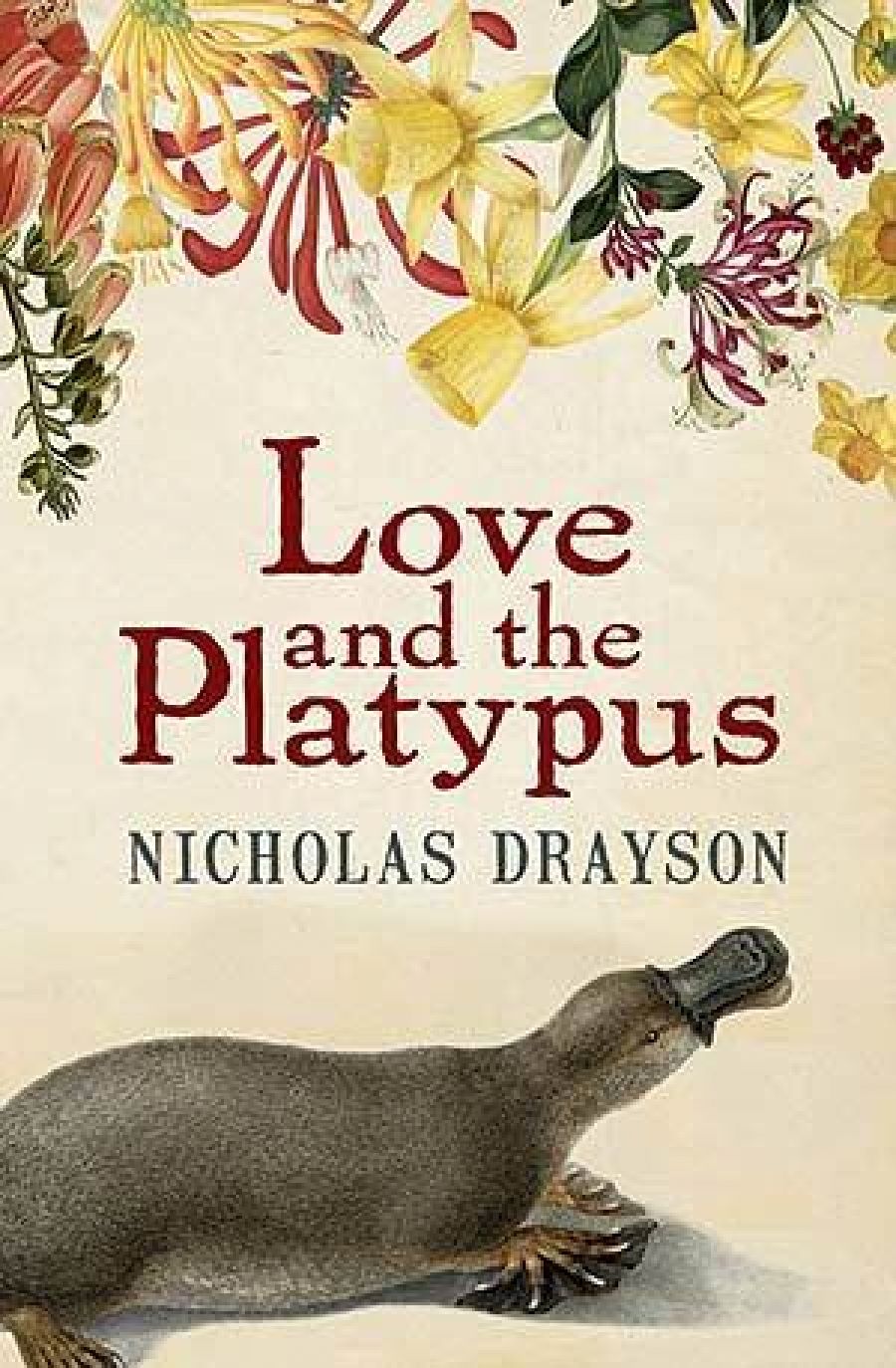
- Free Article: No
- Contents Category: Fiction
- Review Article: Yes
- Article Title: 'Love and the Platypus' by Nicolas Drayson
- Online Only: No
- Custom Highlight Text:
The naturalist has been something of a recurring figure in recent Australian historical fiction: there is Ingrid in Jessica White’s A Curious Intimacy (2007), Lindsay Simpson’s Lady Jane in The Curer of Souls (2007), and now the real-life William Caldwell, from Nicolas Drayson’s Love and the Platypus. The novel opens in 1883 with the young British naturalist arriving in Queensland. In search of the elusive platypus egg, he crosses overland to the Burnett River, where he sets up camp and begins his investigation.
- Book 1 Title: Love and the Playtypus
- Book 1 Biblio: Scribe, $32.95 pb, 341 pp
Intriguingly, Drayson, like his protagonist, is himself something of a ‘platypus hunter’: he is consultant to the National Museum of Australia on platypus acquisitions. Although this doubtless makes for fascinating dinner-party conversation, it is not a subject that translates into a particularly beguiling narrative. For those with less enquiring scientific minds, the long passages detailing the anatomy of monotremes may be tedious. Similarly, the lengthy chapter epigraphs, taken from various nineteenth-century references, while intended to lend authenticity, only become tiresome.
The landscape, however, is finely realised – it is here that Drayson is at his best. Which of us is not familiar with the outback sun setting like ‘dusk’s rosy fingers still clinging to the western sky’; a sky that becomes ‘exactly the colour of a fine, ripe salmon roe’? Drayson shapes endearing secondary characters, such as the nuggety bullock driver Harry Norton, and Ben Fuller, a strangely poetical bushman.
But the novel comes undone in Drayson’s awkward construction of William, whose wooden dialogue and unappealing attitudes are jarring. Most frustratingly, the platypus, so elegantly illustrated on the book’s cover, remains an enigmatic entity, largely absent from the first half of the story. Unfortunately, by the end, having been so disengaged from William, this platypus has lost all significance to the reader, who is unlikely to care if its egg actually exists.


Comments powered by CComment